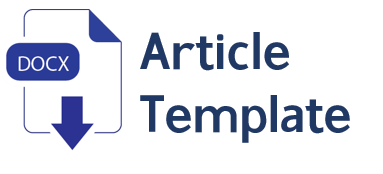Analysis of Factors Affecting the Potential Bankruptcy of Construction Companies Before and During Covid-19
DOI:
https://doi.org/10.30741/wiga.v14i1.1123Keywords:
Altman, Bankruptcy, Construction, Macroeconomics, OhlsonAbstract
Every company has goals to achieve, including construction companies. However, a problem that cannot be avoided in every company is bankruptcy. This study aimed to determine differences in the financial distress of construction companies before and during the COVID-19 pandemic and whether financial and macroeconomic factors affected financial distress before and during the COVID-19 pandemic crisis. The population in this research is all construction companies on the Indonesian Stock Exchange. The sampling technique used was purposive sampling. The samples obtained were 25 construction sector companies on the Indonesia Stock Exchange during 2017-2022. The research method uses a panel data regression model involving company financial and macroeconomic factors on the financial distress of companies as measured by the bankruptcy model Altman (1968) and Ohlson (1980). The study's results confirmed no differences between Z-scores and O-scores before and during the Covid-19 pandemic. However, there were differences in construction companies' Z-score and O-score patterns before and during the Covid-19 pandemic. In addition, it was also found that before and during the Covid-19 pandemic crisis, only the company's financial factors affected the Z-score and O-score model.
Downloads
References
Acosta-González, E., Fernández-Rodríguez, F., & Ganga, H. (2019). Predicting corporate financial failure using macroeconomic variables and accounting data. Computational Economics, 53, 227–257.
Agarwal, V., & Taffler, R. (2008). Comparing the performance of market-based and accounting-based bankruptcy prediction models. Journal of Banking & Finance, 32(8), 1541–1551.
Alcalde, R., Alonso de Armiño, C., & García, S. (2022). Analysis of the economic sustainability of the supply chain sector by applying the Altman Z-score predictor. Sustainability, 14(2), 851.
Altman, E. I. (1968). Financial ratios, discriminant analysis and the prediction of corporate bankruptcy. The Journal of Finance, 23(4), 589–609.
Altman, E. I. (2005). An emerging market credit scoring system for corporate bonds. Emerging Markets Review, 6(4), 311–323.
Altman, E. I. (2018a). A fifty-year retrospective on credit risk models, the Altman Z-score family of models and their applications to financial markets and managerial strategies. Journal of Credit Risk, 14(4).
Altman, E. I. (2018b). Applications of distress prediction models: what have we learned after 50 years from the Z-score models? International Journal of Financial Studies, 6(3), 70.
Altman, E. I., Iwanicz‐Drozdowska, M., Laitinen, E. K., & Suvas, A. (2017). Financial distress prediction in an international context: A review and empirical analysis of Altman’s Z‐score model. Journal of International Financial Management & Accounting, 28(2), 131–171.
Fernández-Gámez, M. Á., Soria, J. A. C., Santos, J. A. C., & Alaminos, D. (2020). European country heterogeneity in financial distress prediction: An empirical analysis with macroeconomic and regulatory factors. Economic Modelling, 88, 398–407.
Frank, M. Z., & Goyal, V. K. (2003). Testing the pecking order theory of capital structure. Journal of Financial Economics, 67(2), 217–248.
Gelashvili, V., Gomez-Ortega, A., & Flores-Ureba, S. (2023). Transport companies based on their size and management type: has Covid-19 conditioned their solvency? Economic Research-Ekonomska Istraživanja, 36(3), 2163510.
Giriūniene, G., Giriūnas, L., Morkunas, M., & Brucaite, L. (2019). A comparison on leading methodologies for bankruptcy prediction: The case of the construction sector in Lithuania. Economies, 7(3), 82.
Goh, E., Mat Roni, S., & Bannigidadmath, D. (2022). Thomas Cook (ed): using Altman’s z-score analysis to examine predictors of financial bankruptcy in tourism and hospitality businesses. Asia Pacific Journal of Marketing and Logistics, 34(3), 475–487.
Gupta, G., & Mahakud, J. (2023). Impact of financial distress on investment-cash flow sensitivity: evidence from emerging economy. International Journal of Managerial Finance, 19(4), 713–743.
Hall, V. B., & McDermott, J. (2019). Changes in New Zealand’s Business Insolvency Rates after the Global Financial Crisis. Available at SSRN 3477074.
Jang, Y., Jeong, I., & Cho, Y. K. (2021). Identifying impact of variables in deep learning models on bankruptcy prediction of construction contractors. Engineering, Construction and Architectural Management, 28(10), 3282–3298.
Lisin, A., Kushnir, A., Koryakov, A. G., Fomenko, N., & Shchukina, T. (2022). Financial Stability in Companies with High ESG Scores: Evidence from North America Using the Ohlson O-Score. Sustainability, 14(1), 479.
Ohlson, J. A. (1980). Financial ratios and the probabilistic prediction of bankruptcy. Journal of Accounting Research, 109–131.
Oz, I. O., & Simga-Mugan, C. (2018). Bankruptcy prediction models’ generalizability: Evidence from emerging market economies. Advances in Accounting, 41, 114–125.
Rinofah, R., Kusumawardhani, R., & Putri, V. A. M. (2022). Factors affecting potential company bankruptcy during the covid-19 pandemic. Jurnal Keuangan Dan Perbankan, 26(1), 208–228.
Rusydiana, A. S., Rani, L. N., & Hasib, F. F. (2019). Manakah Indikator Terpenting Stabilitas Sistem Keuangan?: Perspektif Makroprudensial. Jurnal Ekonomi Dan Pembangunan, 27(1), 25–42.
Srebro, B., Mavrenski, B., Bogojević Arsić, V., Knežević, S., Milašinović, M., & Travica, J. (2021). Bankruptcy risk prediction in ensuring the sustainable operation of agriculture companies. Sustainability, 13(14), 7712.
Valaskova, K., Androniceanu, A.-M., Zvarikova, K., & Olah, J. (2021). Bonds between earnings management and corporate financial stability in the context of the competitive ability of enterprises. Journal of Competitiveness, 13(4), 167.
Zizi, Y., Oudgou, M., & El Moudden, A. (2022). The macroeconomic determinants of Moroccan corporate bankruptcy. International Journal of Applied Economics, Finance and Accounting, 14(1), 25–33.
Downloads
Published
How to Cite
Issue
Section
License
Copyright (c) 2024 Hadha Alamajibuwono, Imo Gandakusuma

This work is licensed under a Creative Commons Attribution-NonCommercial 4.0 International License.










